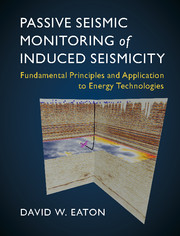 Passive Seismic Monitoring of Induced Seismicity
Passive Seismic Monitoring of Induced Seismicity References
Published online by Cambridge University Press: 07 June 2018
- Type
- Chapter
- Information
- Passive Seismic Monitoring of Induced SeismicityFundamental Principles and Application to Energy Technologies, pp. 302 - 339Publisher: Cambridge University PressPrint publication year: 2018


